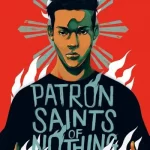
3 Sentence Summary
“Sonny’s Blues” by James Baldwin is a widely read and popular short story, often found in college literature anthologies. Set in the community of Harlem, it tells the story of two brothers and explores themes of suffering, community, and redemption. The story also uses the power of blues and jazz music to convey the importance of communication, self-expression, art, and heritage.
Summary Read Time: Less than 5 minutes
Actual Book Length: 88
First Published in: 1957
Below is the detailed yet quick summary of the book:
Part 1
The story of “Sonny’s Blues” opens with the narrator, a high school algebra teacher, reading in the newspaper that his younger brother Sonny has been arrested for using and selling heroin. The news preoccupies him throughout his day as he thinks of the struggles his young black male students in Harlem may also be facing.
As the narrator goes through his day, he runs into an old friend of Sonny’s, a drug user, on the subway. Their conversation makes the narrator realize the harsh reality of prison for Sonny. But despite this realization, the narrator is unsure of whether or not he wants to help his brother.
Months later, the narrator’s young daughter Grace passes away from polio, and he finally decides to write to Sonny in jail. Sonny responds that he needed to hear from his brother but was hesitant to reach out first because of the pain he has caused. The two start corresponding and when Sonny is released, he comes to live with the narrator’s family in Harlem. This prompts the narrator to reflect on his childhood and the promise he made to his mother to protect Sonny, and how the world hasn’t changed much since then.
Part 2
The narrator, a married man in the army, receives a furlough to attend his mother’s funeral. He arranges for his teenage brother, Sonny, to live with his wife’s parents until he finishes school. During this visit, Sonny reveals his desire to be a jazz musician, but the narrator discourages him harshly. Sonny ends up joining the navy and leaving without saying goodbye. The next time the narrator sees Sonny is after the war, when Sonny is living downtown with a group of musicians. They have a fight and don’t speak again until the narrator writes to Sonny in jail.
The story then returns to the present, when Sonny has been living with the narrator for two weeks. The narrator sees Sonny at a revival meeting. They discuss the intensity of suffering and how drugs and music can be an escape from it. Sonny reminds the narrator that his troubles aren’t necessarily over. The narrator promises to always be there for him.
Part 3
The two of them go to a nightclub, and the narrator is surprised by how admired and beloved Sonny is by everyone there. Sonny and his band begin to play. The narrator then reflects on how difficult it must be to play music, to impose order on all the rage, delight, and confusion inside of people. Sonny seems to struggle at first to really put himself into the music. But eventually Sonny hits his stride and the narrator tears up thinking about suffering. He realizes that music is telling everyone’s story. It’s a gift to strive to tell it anew in a way that will make an audience listen and confront their demons, making them feel less alone.
When the band pauses, the narrator buys Sonny a drink, and the bartender puts the glass on top of his piano. Sonny sips it, meets eyes with the narrator, and returns to playing. The narrator watches the glass shake sitting on the piano above Sonny’s head, comparing it to “the very cup of trembling.”





